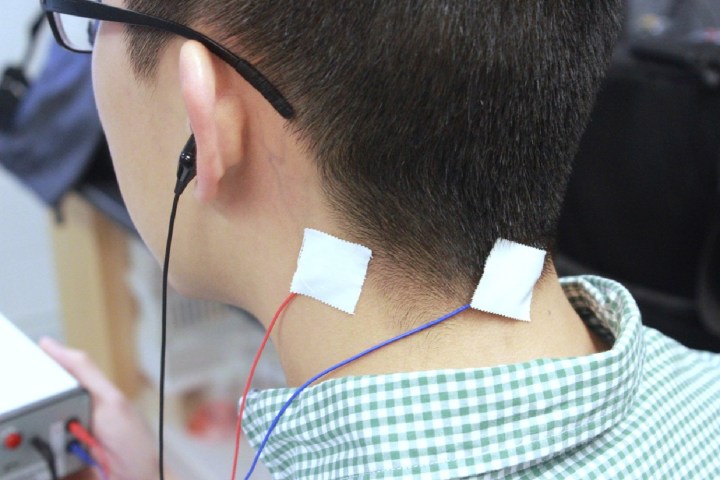
New research from the University of Michigan may be able to provide some relief, thanks to an experimental device that quiets these sounds by using precisely timed sounds and weak electrical pulses to target unruly nerve activity in the brain. By doing so, it is able to “reset” damaged nerve cells to their properly functioning state. After four weeks of using the device daily, participants in a trial found that the effects of tinnitus diminished. A sound-based placebo treatment, meanwhile, did not result in similarly positive effects.
“The brain, and specifically the region of the brain stem called the dorsal cochlear nucleus, is the root of tinnitus,” Professor Susan Shore, who led the research, said in a statement. “When the main neurons in this region, called fusiform cells, become hyperactive and synchronize with one another, the phantom signal is transmitted into other centers where perception occurs. If we can stop these signals, we can stop tinnitus.”
There are a number of current treatments for tinnitus, ranging from the use of real sounds to mask the phantom sounds to far more invasive (and potentially dangerous) approaches like deep brain stimulation. What makes the new research so promising is that it offers a noninvasive way to treat tinnitus with decreased risk and, potentially, longer-lasting effects because it is treating the neural pathways that cause the disorder, rather than merely attempting to lessen its effects.
Next up, the researchers hope to further optimize the treatment, such as working out which groups of patients will benefit the most, and pinpointing the optimal duration of each treatment. The device is still considered experimental and not ready for commercialization. Hopefully that will change in the future.
A paper describing the work was recently published in the journal Science Translational Medicine.
Editors' Recommendations
- Your wearables can soon help contact trace coronavirus outbreaks
- Facebook’s ‘brain-computer interface’ could let you type with your mind


